Abstract
We have studied the infrared spectra of the bound and photodissociated states of Mb-12CO and Mb-13CO from 5.2 to 300 K. The absorbance peaks seen between 1800 and 2200 cm-1 correspond to CO stretching vibrations. In the bound state of Mb-12CO, the known lines A0 at 1969, A1 at 1945, and A2 at 1927 cm-1, have center frequencies, widths, and absorbances that are independent of temperature between 5.2 and 160 K. Above 160 K, A2 gradually shifts to 1933 cm-1. The low-temperature photodissociated state (Mb) shows three lines (B0, B1, B2) at 2144, 2131, and 2119 cm-1 for 12CO. The absorbances of the three lines depend on temperature. B0 is tentatively assigned to free CO in the heme pocket and B1 and B2, to CO weakly bound to the heme or heme pocket wall. The data are consistent with a model in which photodissociation of MbCO leads to B1 and B2. B2 decays thermally to B1 above 13 K; rebinding to A occurs from B1. The barriers between B2 and B1 and between B1 and A are described by activation enthalpy spectra. Heme and the central metal atom in state Mb have near-infrared, EPR, and Mössbauer spectra that differ slightly from those of deoxyMb. The observation of essentially free CO in state B implies that the difference between Mb and deoxyMb is not due to an interaction of the flashed-off ligand with the protein but is caused by an incomplete relaxation of the protein structure at low temperatures.
Full text
PDF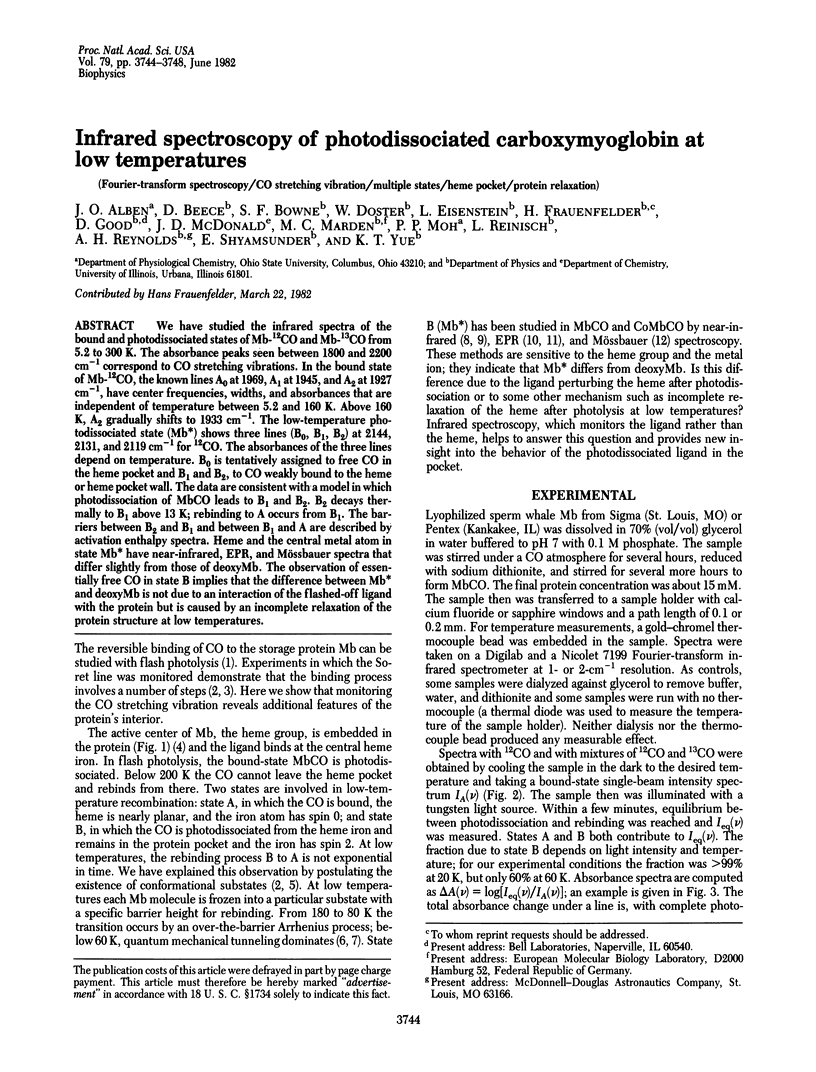
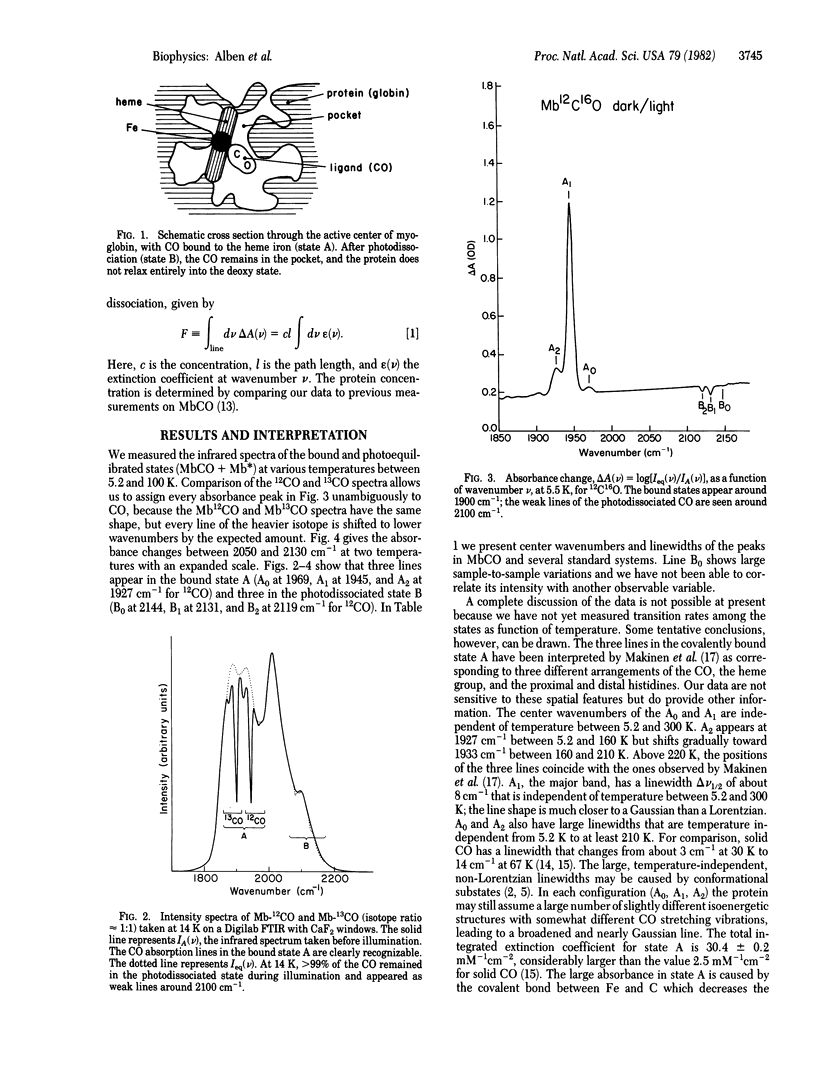
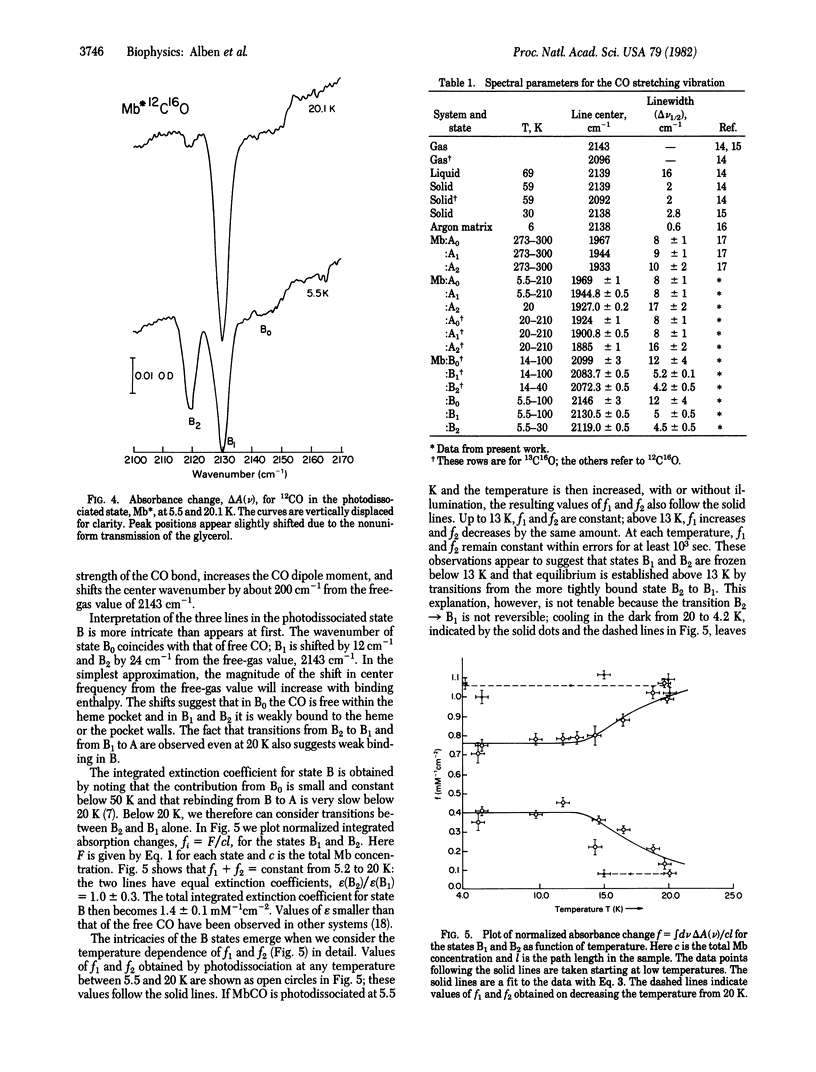
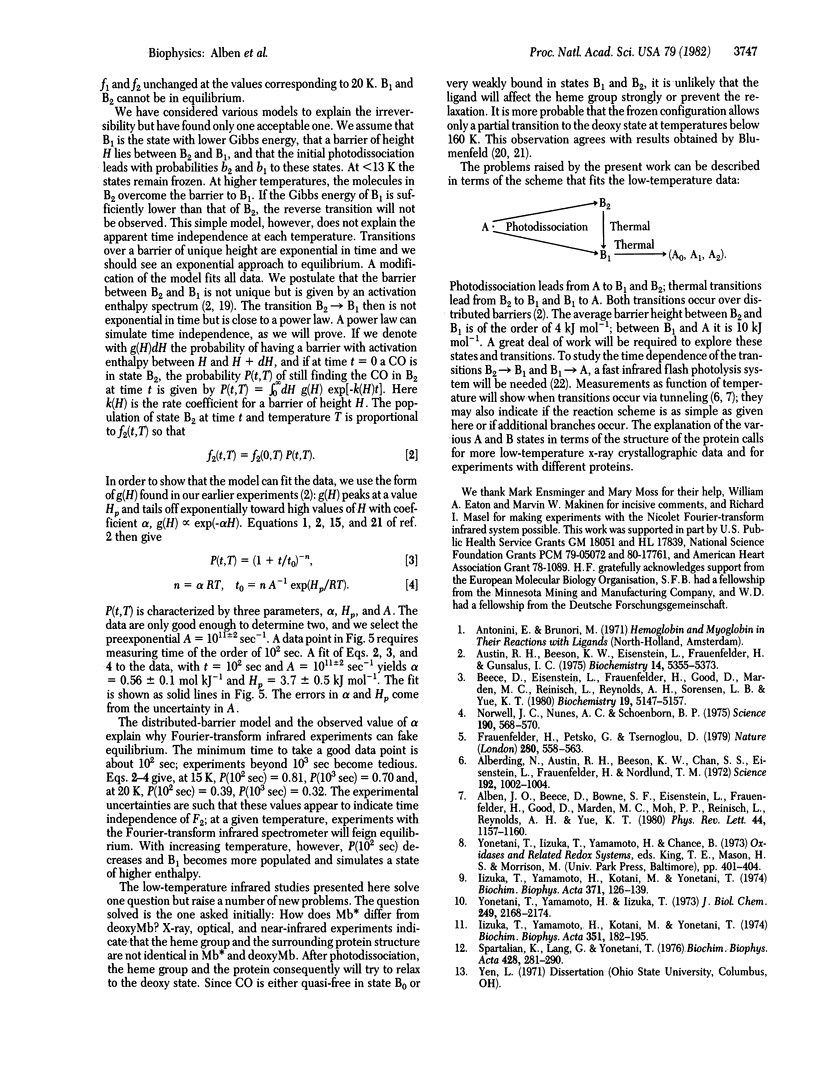
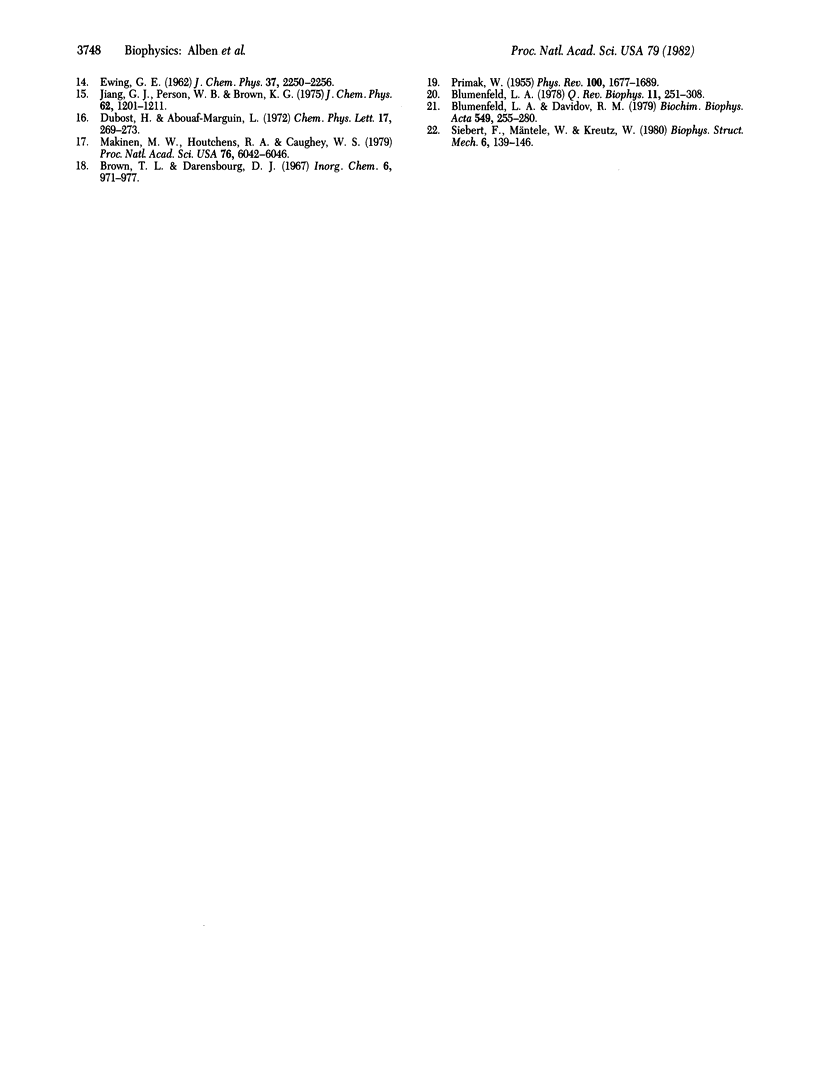
Selected References
These references are in PubMed. This may not be the complete list of references from this article.
- Alberding N., Austin R. H., Beeson K. W., Chan S. S., Eisenstein L., Frauenfelder H., Nordlund T. M. Tunneling in ligand binding to heme proteins. Science. 1976 Jun 4;192(4243):1002–1004. doi: 10.1126/science.1273579. [DOI] [PubMed] [Google Scholar]
- Austin R. H., Beeson K. W., Eisenstein L., Frauenfelder H., Gunsalus I. C. Dynamics of ligand binding to myoglobin. Biochemistry. 1975 Dec 2;14(24):5355–5373. doi: 10.1021/bi00695a021. [DOI] [PubMed] [Google Scholar]
- Beece D., Eisenstein L., Frauenfelder H., Good D., Marden M. C., Reinisch L., Reynolds A. H., Sorensen L. B., Yue K. T. Solvent viscosity and protein dynamics. Biochemistry. 1980 Nov 11;19(23):5147–5157. doi: 10.1021/bi00564a001. [DOI] [PubMed] [Google Scholar]
- Blumenfeld L. A., Davidov R. M. Chemical reactivity of metalloproteins in conformationally out-of-equilibrium states. Biochim Biophys Acta. 1979 Dec 13;549(3-4):255–280. doi: 10.1016/0304-4173(79)90002-8. [DOI] [PubMed] [Google Scholar]
- Blumenfeld L. A. The physical aspects of energy transduction in biological systems. Q Rev Biophys. 1978 Aug;11(3):251–308. doi: 10.1017/s0033583500002286. [DOI] [PubMed] [Google Scholar]
- Frauenfelder H., Petsko G. A., Tsernoglou D. Temperature-dependent X-ray diffraction as a probe of protein structural dynamics. Nature. 1979 Aug 16;280(5723):558–563. doi: 10.1038/280558a0. [DOI] [PubMed] [Google Scholar]
- Iizuka T., Yamamoto H., Kotani M., Yonetani T. Low temperature photodissociation of hemoproteins: carbon monoxide complex of myoglobin and hemoglobin. Biochim Biophys Acta. 1974 Nov 5;371(1):126–139. doi: 10.1016/0005-2795(74)90161-5. [DOI] [PubMed] [Google Scholar]
- Iizuka T., Yamamoto H., Kotani M., Yonetani T. Low temperature photodissociation of hemoproteins: oxygenated cobalt-myoglobin and hemoglobin. Biochim Biophys Acta. 1974 Jun 7;351(2):182–195. doi: 10.1016/0005-2795(74)90180-9. [DOI] [PubMed] [Google Scholar]
- Makinen M. W., Houtchens R. A., Caughey W. S. Structure of carboxymyoglobin in crystals and in solution. Proc Natl Acad Sci U S A. 1979 Dec;76(12):6042–6046. doi: 10.1073/pnas.76.12.6042. [DOI] [PMC free article] [PubMed] [Google Scholar]
- Norvell J. C., Nunes A. C., Schoenborn B. P. Neutron diffraction analysis of myoglobin: structure of the carbon monoxide derivative. Science. 1975 Nov 7;190(4214):568–570. doi: 10.1126/science.1188354. [DOI] [PubMed] [Google Scholar]
- Siebert F., Mäntele W., Kreutz W. Flash-induced kinetic infrared spectroscopy applied to biochemical systems. Biophys Struct Mech. 1980;6(2):139–146. doi: 10.1007/BF00535750. [DOI] [PubMed] [Google Scholar]
- Spartalian K., Lang G., Yonetani T. Low temperature photodissociation studies of ferrous hemoglobin and myoglobin complexes by Mössbauer spectroscopy. Biochim Biophys Acta. 1976 Apr 23;428(2):281–290. doi: 10.1016/0304-4165(76)90036-2. [DOI] [PubMed] [Google Scholar]
- Yonetani T., Yamamoto H., Iizuka T. Studies on cobalt myoglobins and hemoglobins. 3. Electron paramagnetic resonance studies of reversible oxygenation of cobalt myoglobins and hemoglobins. J Biol Chem. 1974 Apr 10;249(7):2168–2174. [PubMed] [Google Scholar]


